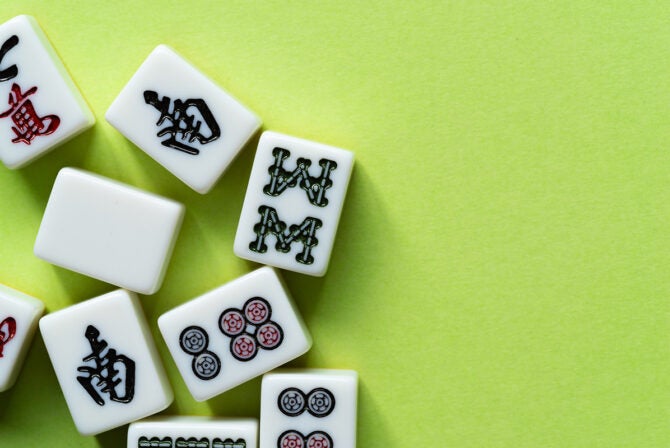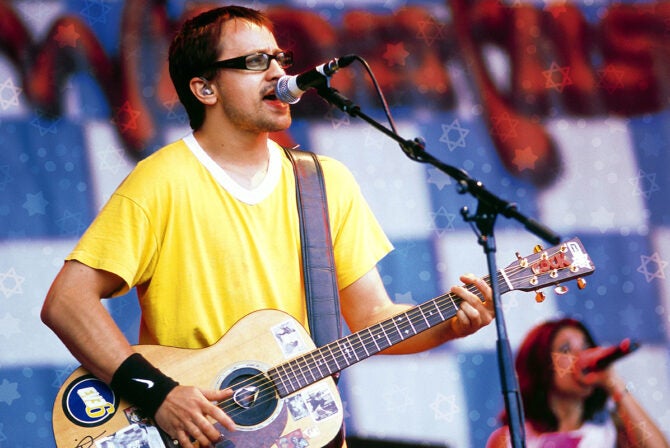It started with a desperate attempt to occupy my 2-year-old. We had recently moved, not just across the country but across the world, to a metropolitan area my husband knew well but I did not. We had made the move on short notice, and hadn’t had time to find childcare in advance.
My schedule was flexible, while my husband’s was not, and so I was home. Home with my child, with many hours to fill, in a new place where I knew nobody.
Among the various charming features of our new home was its proximity to a naturally occurring water source, a flowing creek that runs for 10 miles through tree-filled parkland. In some places the creek can be crossed by a wooden footbridge, fallen tree trunk or series of gigantic boulders. Little beaches dot the creek at regular intervals, and it was there, among the rocks and weeds, mud and mosquitos, that my son and I discovered a treasure one late summer day: sea glass in every imaginable shade of green, from emerald to sea foam; clear glass worn white and frosted; brown glass glinting like amber in the rubble; and occasionally, a piece of royal blue glass, as sparkly as a sapphire.
Before we continue, let’s discuss the obvious misnomer. What my son and I had happened upon was not in fact sea glass, which implies the presence of an ocean, and carries with it images of summers in Maine. What we had found was, in fact, creek glass, far more humble. The pieces were jagged and rough, appearing in strange shapes and sizes. Some had been configured by the water into multifaceted gemstones, others were light and translucent as ice chips. Some bore traces of their former lives as Heineken or Coca-Cola bottles, numbers or the occasional word fragment.
Collecting the glass was calming, almost meditative, and soon it became part of our daily routine. The only sound accompanying us was water rushing over rocks, maybe one of us singing to ourselves. Sometimes we’d see a duck. Sometimes we’d see a deer. Sometimes other kids would come by and ask us what we were doing, and invariably they would join us. “Look what I found!” they’d call out, and rush over with their discovery. Finding light-blue glass was uncommon, but dark blue even more so. I explained this to my son, and soon, upon finding such a piece, he’d exclaim, “Rare blue!”
When we got home, we’d soak our loot in soapy water, then dry it and sort it by shape and color. We’d examine each piece; one looked like a shark’s tooth, another like a boat. Our collection grew: it filled a jar, then another, and another.
If I were so inclined, we could have used our bounty to make wind chimes or mosaics or, as I found on Etsy, a “coastal glass wall clock.” But I didn’t want to do anything with the glass; what was valuable to me was not what it could add to my “décor,” but the process of collecting it, the afternoons we spent immersed in our task as the hours flew by.
And then, one fall morning, my little boy started preschool. His days were filled, and when I picked him up, he was usually too tired to go to the park, let alone go hunting for glass. He was on to Paw Patrol figures, Little Tikes basketball, and Matchbox cars. I had to acknowledge that our days prospecting for treasure were over. That brief time of being together in a magical world, partially of our own creation, had ended.
*
Moving, it turns out, isn’t easy. I knew that, because I’d already done it a bunch of times in my adult life. But I’d never done it with a child. I’d never moved to a new place tasked with the responsibility not just for my own acclimation, but for someone else’s. How could I make my son feel safe and secure when I felt so disoriented myself?
But the wonderful thing about moving is that it is full of surprises: Six months in, it was clear that the job we had moved here for (my husband’s) was not working out. Soon after, I discovered that my estranged father was terminally ill. Then the house we were renting broke out in a rash of mold, appearing on the walls like leprosy. There was a protracted negotiation with the management company. My tendency toward anxiety tilted full-scale. Once-rare panic attacks became regular. Some nights I cried so hard my eyes were still puffy the next morning.
I had the expected arsenal of tools at my disposal—the weekly therapy session, the yoga practice, and many a Jewish woman’s best friend, the SSRI. But none of these practices helped enough. So one Sunday afternoon, while my son was at his cousins’ house, I tried to think of what I could do to feel better. I tried to think of the quietest, calmest place I could imagine, and that’s when I realized exactly what I wanted to do: I would go to the creek and look for glass.
Hiking down to the water without a toddler in tow felt a little strange, like I was violating an unofficial rule; adults have more important things to do, like pay taxes and contemplate death. Buried in the rocks I found a light green piece of glass, square-cut like a crystal. I found a heavy white disc, clearly once the base of a bottle, now worn smooth and sculptural. I wondered how long it had been traveling downstream.
At home, I filled jar after jar with my discoveries, which soon lined my kitchen shelves, as though I were canning vegetables for winter. But unlike canning, this task had no actual purpose. And unlike other hobbies, like gardening or knitting, it would never feed anyone or keep anyone warm. But it gave me so much pleasure, scavenging for something that is, essentially, garbage, and finding beauty in it.
In the meantime, life kept moving. My husband got a new job. My son made friends at school. I began working more. I switched therapists. We moved a few streets away to a new, better insulated, home. My panic attacks became less frequent. One day, under one of the wooden bridges where glass collected, I found underfoot a large, triangular piece of cobalt glass. Nobody else was around, and without realizing it, I whispered to myself: “Rare blue.”
 This post is part of the Here.Now series, which seeks to destigmatize mental health,
This post is part of the Here.Now series, which seeks to destigmatize mental health,
and is made possible by UJA-Federation of New York and The Jewish Board.
You can find other educational mental health resources here.







